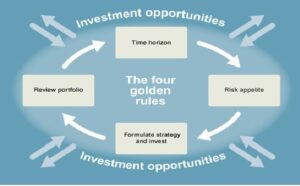Investing in the stock market has the potential to yield significant returns, making it a popular choice for individuals aiming to achieve their long-term financial objectives. However, for novice investors, the prospect of investing can appear daunting and overwhelming. Fortunately, there exist numerous investment options that are considered ideal for beginners, catering to diverse goals, budgets, and comfort levels.
While these investment ideas will outline the most prevalent options, it is advisable to seek the assistance of a financial advisor like Joseph Stone Capital who can identify your optimal choices and offer guidance throughout your initial investment journey.

Emergency Fund: A Crucial Step Before Investing
Before diving into investment options for beginners, it is essential to establish good financial habits. To begin with, it is highly recommended to create an emergency fund as the foundation of your investment portfolio. This fund should ideally cover 3-6 months’ worth of your regular expenses. Having an emergency fund ensures that you have a safety net in case of unexpected events such as a sudden loss of income or medical emergencies. Some individuals make the mistake of rushing into investments prematurely. They may find themselves needing immediate access to cash and end up selling their investments at the wrong time. This hasty decision can result in financial losses, which is even worse than keeping the money in cash. Therefore, it is crucial to prioritize building an emergency fund before venturing into investments to safeguard your financial stability.
Short-Term Certificates of Deposit: A Safe Savings Option
A certificate of deposit, also known as a CD, is a special type of savings account that offers a higher Annual Percentage Yield (APY) compared to a regular savings account. With a CD, you deposit a lump sum of money for a specific period agreed upon with the bank. During this time, you cannot access the funds without paying a penalty. CDs have different term lengths, ranging from 6 months to 5 years. The longer the term, the higher the APY typically offered. However, there are also short-term CDs available that allow you to withdraw your funds without any penalties. Short-term CDs are a good option if you need access to your money within a shorter timeframe. They provide a safe and reliable way to earn interest on your savings without the risk associated with other investment options.
Make Saving Easy with Automation
If you struggle to save money consistently each month due to a lack of motivation or organization, technology can lend a helping hand. There are smartphone and computer applications designed to simplify the saving process. The most user-friendly apps are those that round up your purchases and other transactions to the nearest dollar and automatically save the extra amount for you. This is one of the finest investment ideas as you can effortlessly accumulate savings without even noticing it.
Mutual Funds: Diversified Investing Made Easy
Instead of investing in individual funds, consider putting your money into a mutual fund. A mutual fund is a collection of investments that you can buy a share of. An experienced manager decides where to invest the money, which helps spread the risk and avoids putting all your money in one place.
When you’re young, it’s common to have more of your money invested in stocks. While stocks are riskier, they have the potential for higher long-term returns. As you approach retirement age, your investment mix will shift toward bonds. Bonds are safer and can provide a steady income during retirement.
To simplify the process, you can choose a target-date mutual fund. This type of fund allows you to select your retirement date. When you’re younger, the fund will focus more on stocks, gradually shifting towards bonds as you get closer to retirement. This way, your investment strategy aligns with your age and helps you achieve your retirement goals.
Conclusion
Understanding your investment options is valuable, but you may still be unsure of how to begin investing your money. Before leaping, it’s crucial to reflect on a few key factors. Firstly, consider your short- and long-term financial goals. Whether saving for a down payment on a house, funding your child’s education, or building wealth for retirement, clearly defining your objectives is essential. Evaluate your financial situation and determine how much you can allocate towards investments without compromising your needs and emergency savings. By taking the time to reflect on these aspects, and discussing with experts like Joseph Stone Capital you’ll be better prepared to start your investing journey with a clear understanding of your goals, risk tolerance, and available funds.
